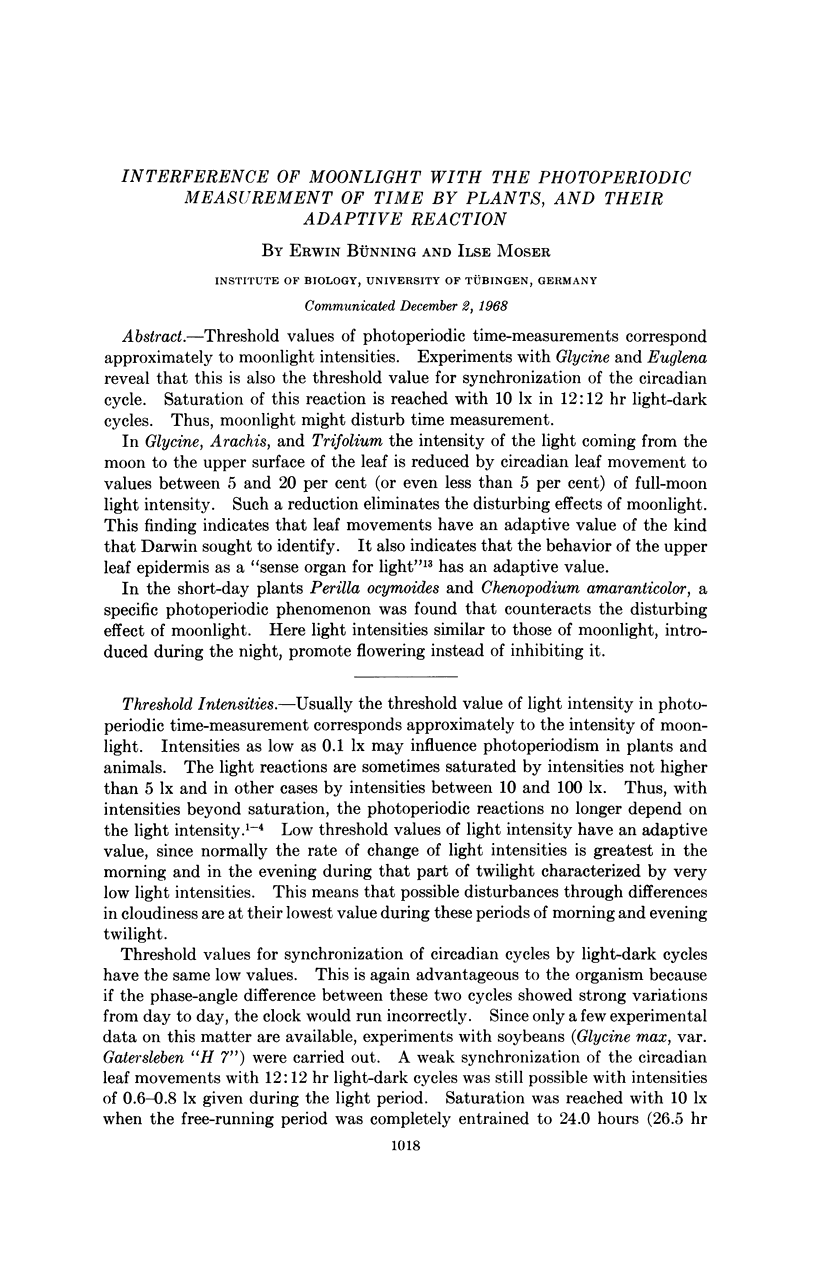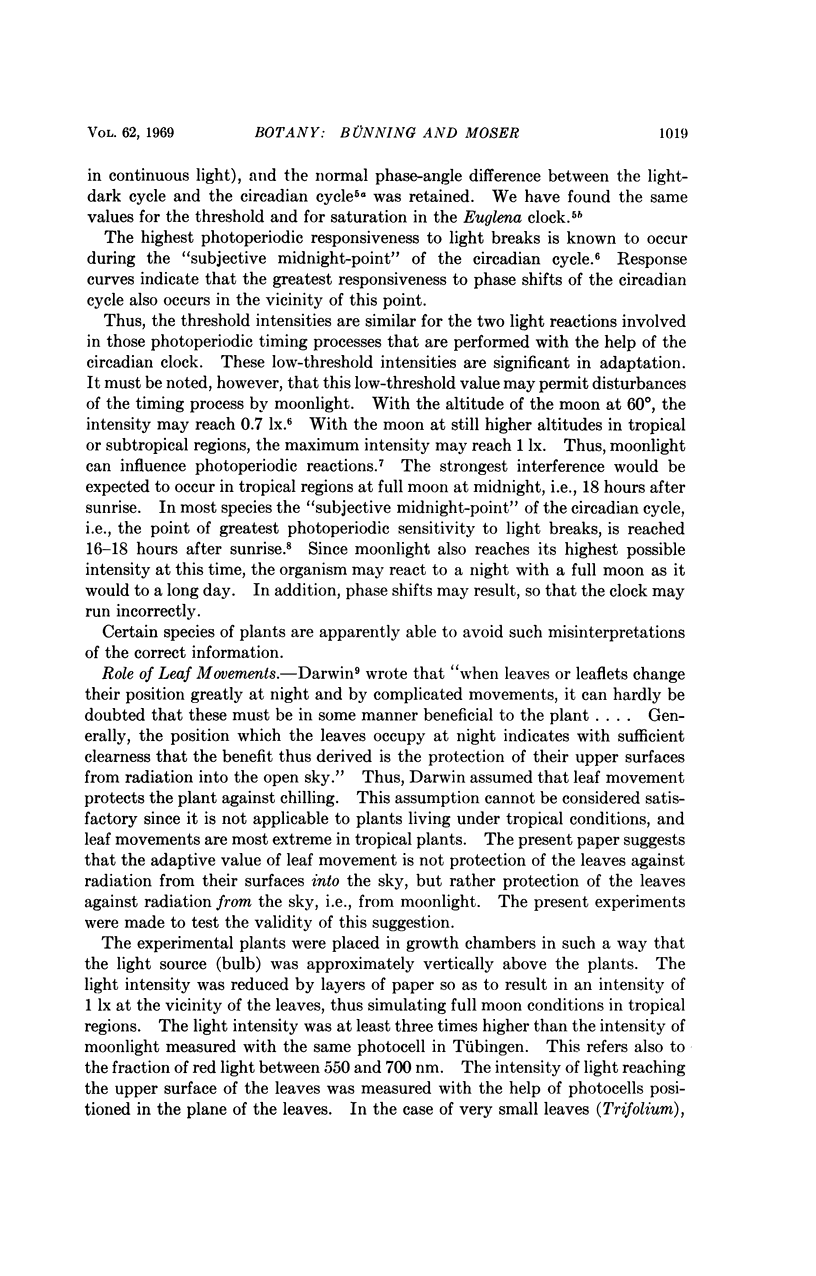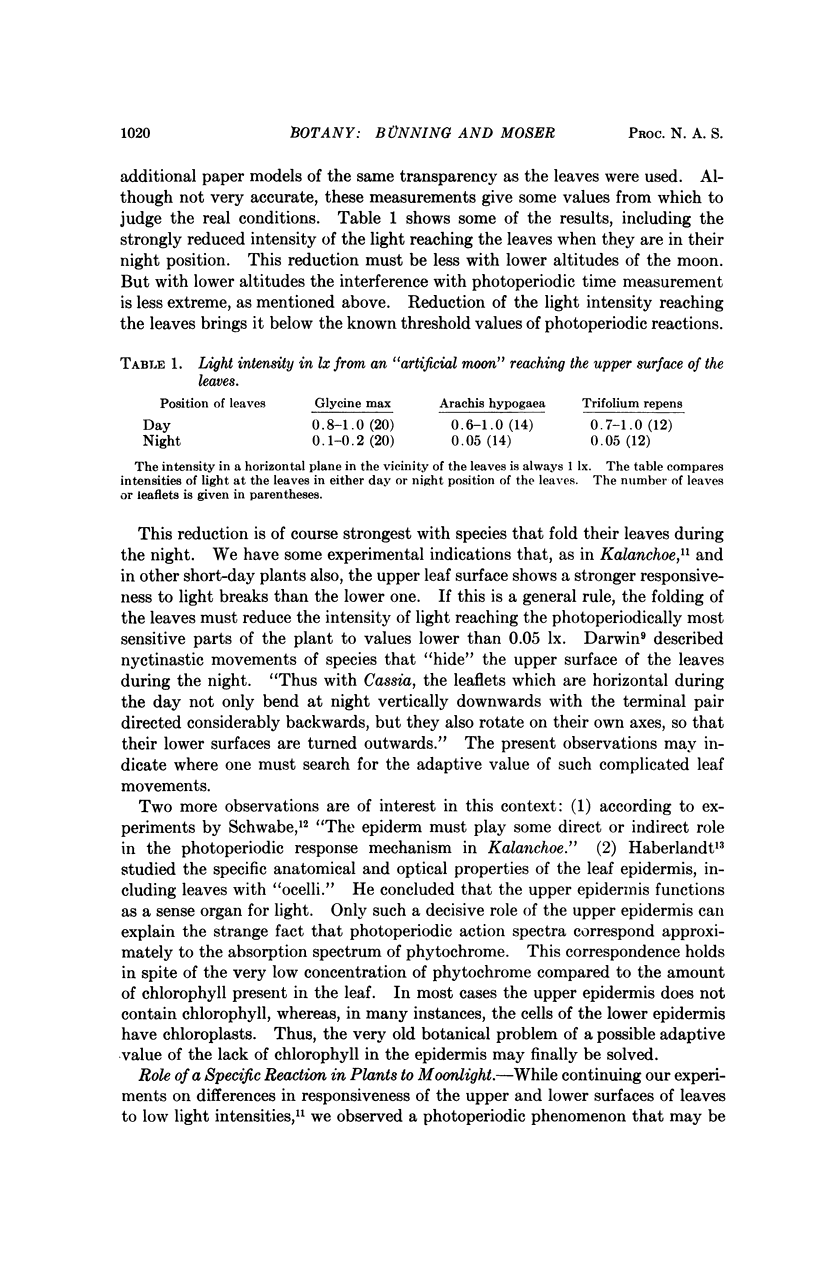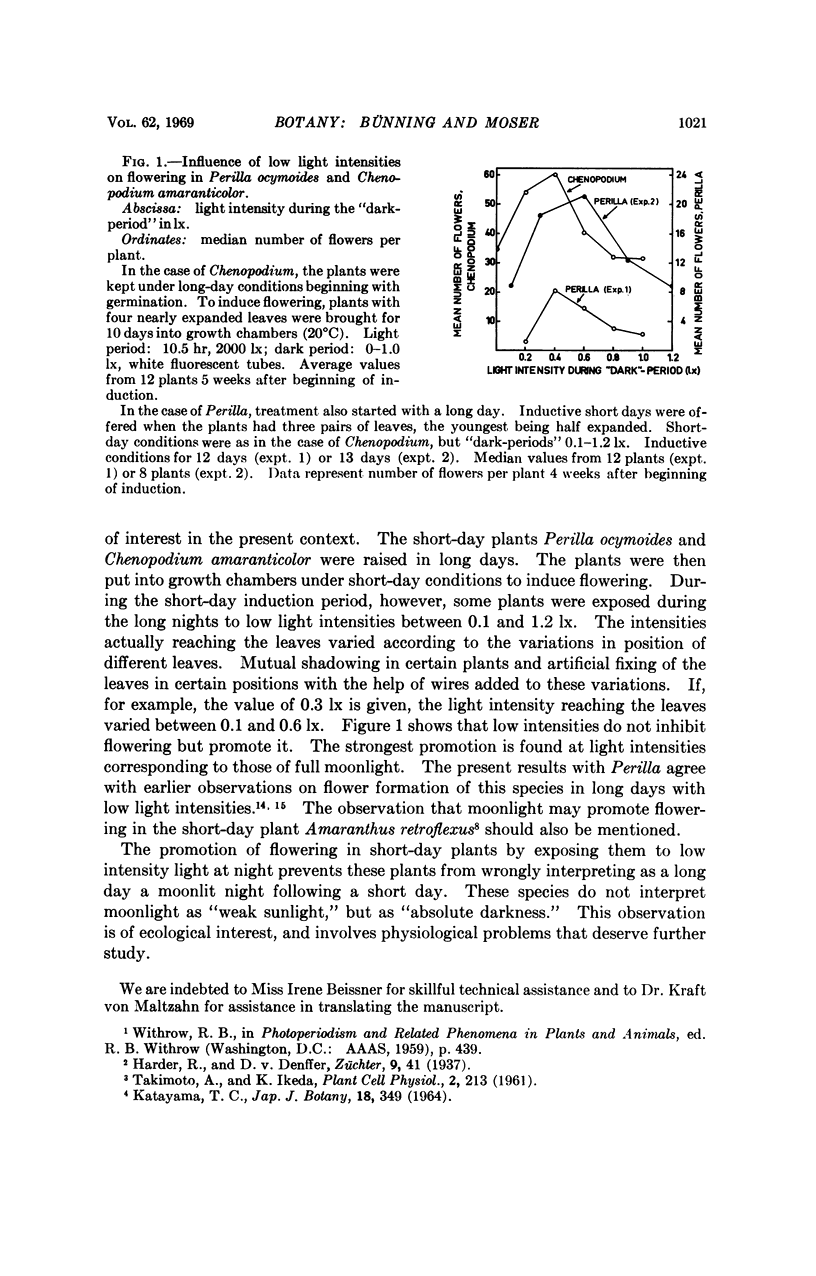Abstract
Threshold values of photoperiodic time-measurements correspond approximately to moonlight intensities. Experiments with Glycine and Euglena reveal that this is also the threshold value for synchronization of the circadian cycle. Saturation of this reaction is reached with 10 lx in 12:12 hr light-dark cycles. Thus, moonlight might disturb time measurement.
In Glycine, Arachis, and Trifolium the intensity of the light coming from the moon to the upper surface of the leaf is reduced by circadian leaf movement to values between 5 and 20 per cent (or even less than 5 per cent) of full-moon light intensity. Such a reduction eliminates the disturbing effects of moonlight. This finding indicates that leaf movements have an adaptive value of the kind that Darwin sought to identify. It also indicates that the behavior of the upper leaf epidermis as a “sense organ for light”13 has an adaptive value.
In the short-day plants Perilla ocymoides and Chenopodium amaranticolor, a specific photoperiodic phenomenon was found that counteracts the disturbing effect of moonlight. Here light intensities similar to those of moonlight, introduced during the night, promote flowering instead of inhibiting it.
Full text
PDF




Selected References
These references are in PubMed. This may not be the complete list of references from this article.
- Bünning E. Common features of photoperiodism in plants and animals. Photochem Photobiol. 1969 Mar;9(3):219–228. doi: 10.1111/j.1751-1097.1969.tb07286.x. [DOI] [PubMed] [Google Scholar]


